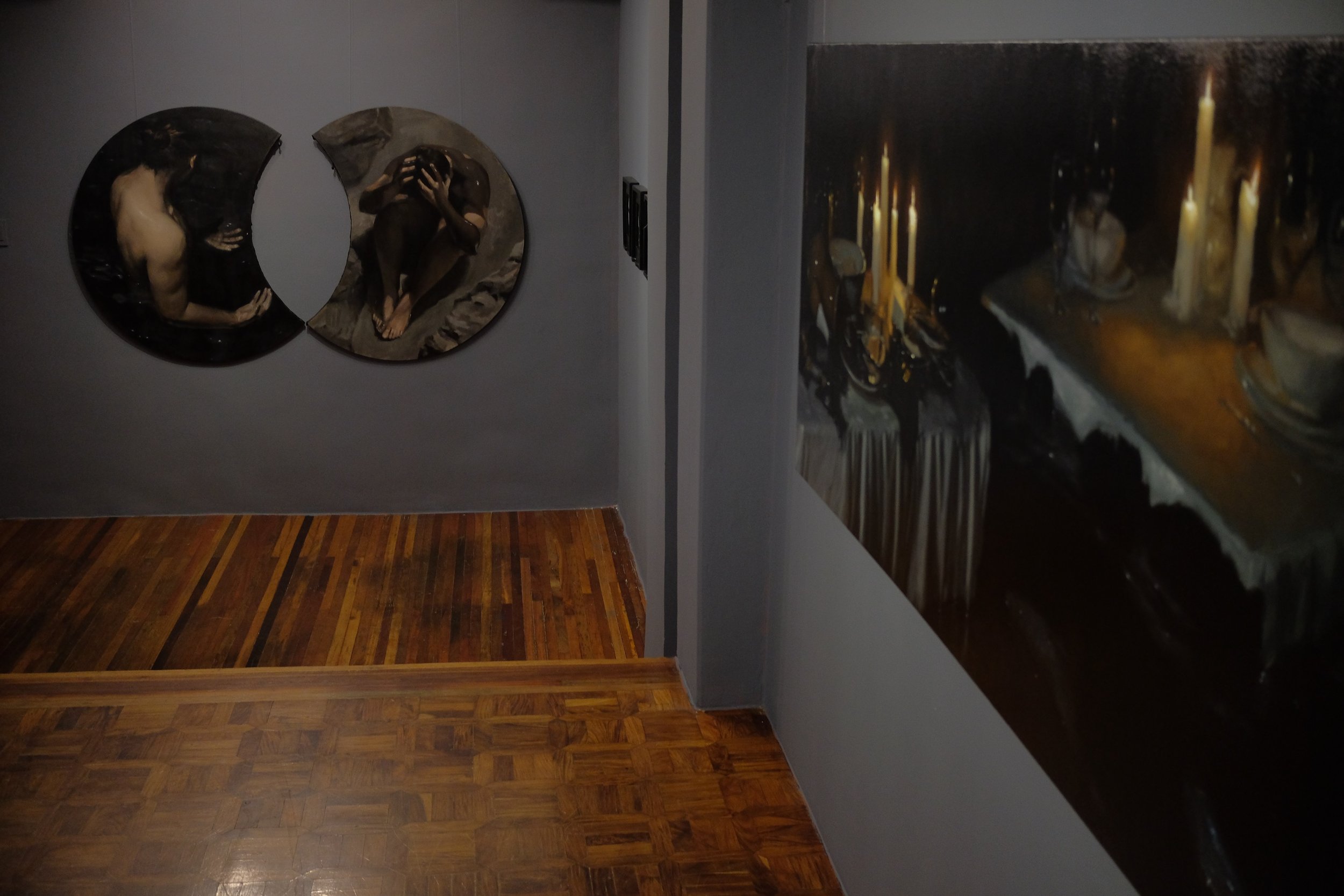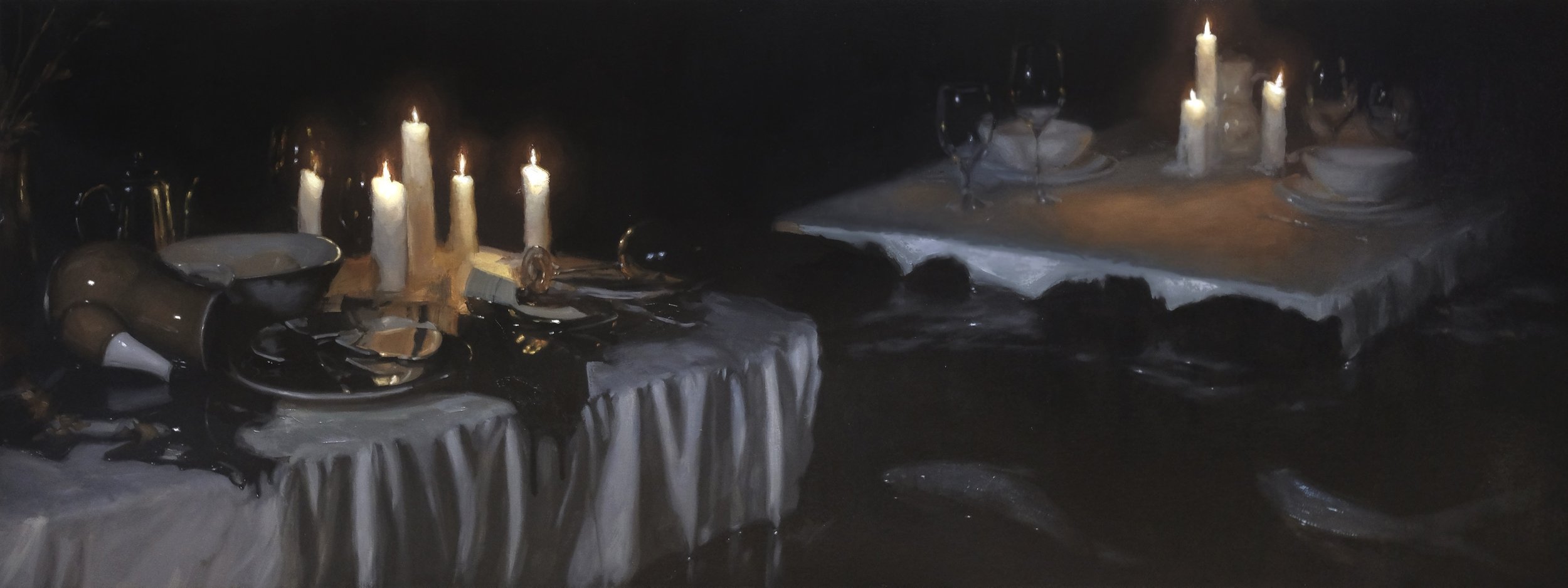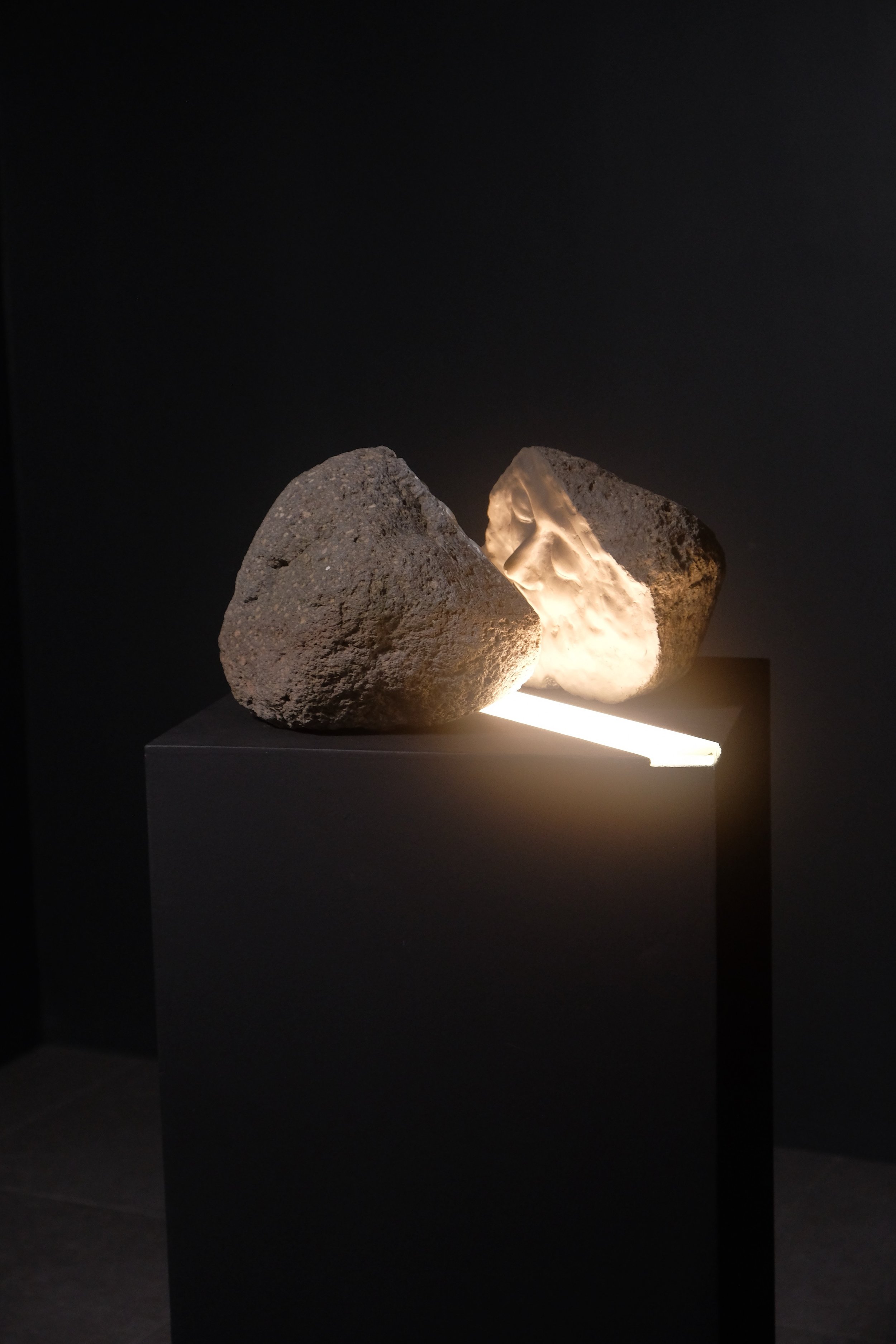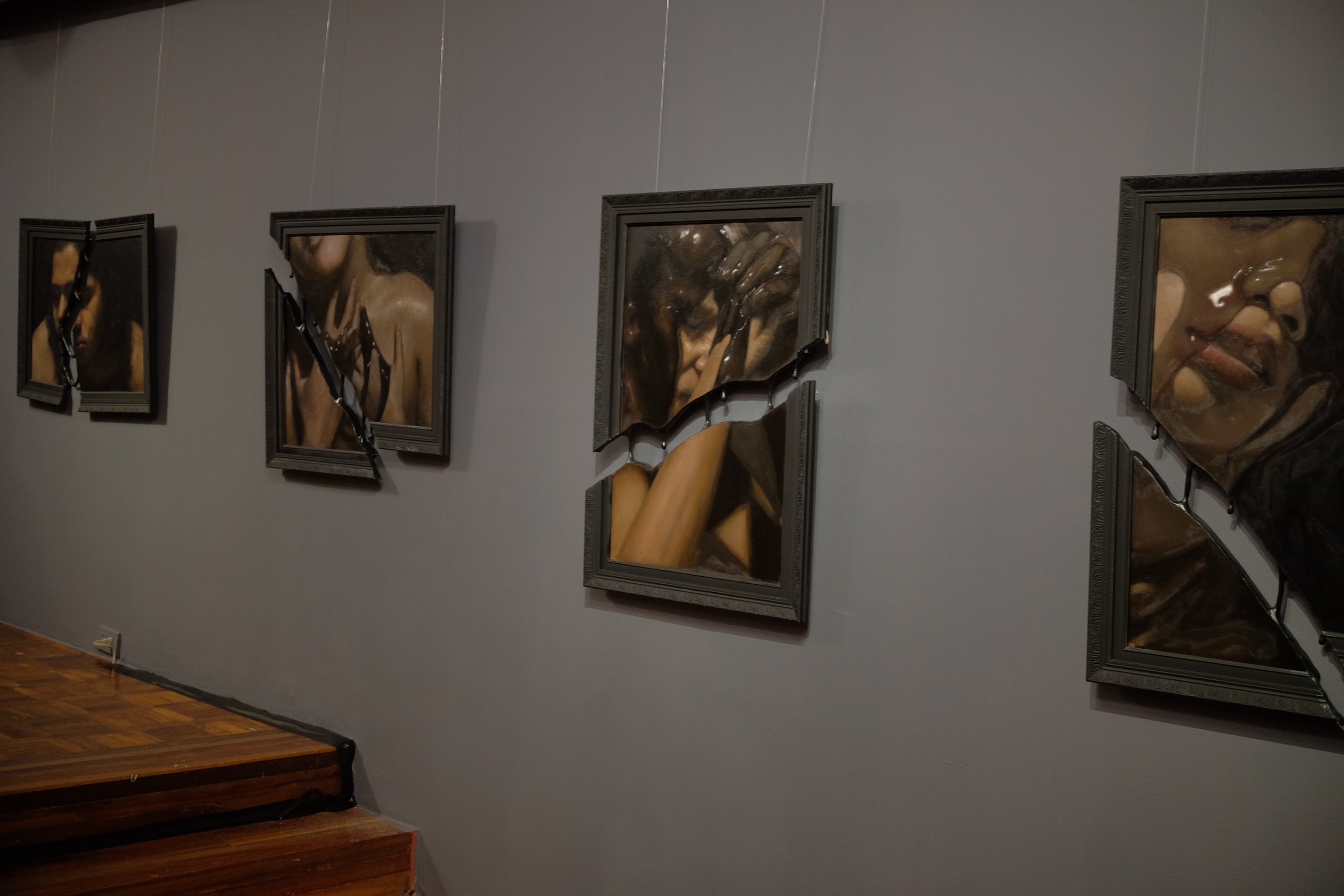
there's no shade in the shadows we hide

there’s no shade in the shadows we hide interrogates the limits of our physical body, pushing us into the liminal realm of the Uncanny. It is centered on dislocation, disrupting our perception of space and optical coherence – educing a facsimile of what is missing, what lies in between, and what is left to fill.
This is a nexus explored to a deep extent by Sigmund Freud whose Uncanny theory explores ego disturbance – doubling, dividing, interchanging – leaving our original selves as broken echoes. This idea of brokenness intertwined with unease is what Crystal Tranquilino confronts in this series of works. What could be more familiar than witnessing our own distortion, our bodies as vessels of memory, hiding in the shadows of what we ought to be?

Anima Mundi is visually presented as a fragmented Venn diagram with disjointed elements existing in proximity to each other, forming a collective whole that is greater than the sum of its parts. The core gestures evinced in the figures invite the viewers to confront the unsettling feeling of our individual sense of belongingness in the world. Its space in between visible– a metaphorical bridge that begs to question the nature of reality and our place in it.

Tranquilino expounds this idea in A Seat at the Table, where the severance of mundane objects was presented as food rather than ornaments - an allegory of modernity’s key markers of identity. It mirrors our current value system preoccupied with possessions and the social image they project, and how we attach our identity to material things. The symbolic potency of this imagery serves as a social commentary on materialism and consumerism, a common compositional theme present in the artist’s body of work.

Through a fusion of organic and synthetic materials, Tranquilino carved Disrupted – a hybrid sculpture that blurs the boundaries between the natural and artificial. It parallels the division of self, a doubling that is simultaneously familiar and strange. The presence of light in between reflects the figures’ permeating shadows. Without it, it stays hidden. With it, it begs to be seen.


In Simulacra, Tranquilino lays out a series of riveting human figures exploring the fluid nature of our identity. The fractured representation of each visual image reflects such nudity that exposes the intangible nature of our own identities and then leaves us bare. It evokes vulnerability; looking at each work to reckon with the DNA of a selfhood imprinted on each canvas.



In breaking down these familiar landscapes, Tranquilino prompts conversations about the nature of human perception and vulnerability as a normal human condition. Humans are all vulnerable regardless of all sorts of hierarchies. No one can really save us from our own miseries, but we have the agency to acquire the tools to transform toward our own rescue.
exhibition notes by Chan Alvarez